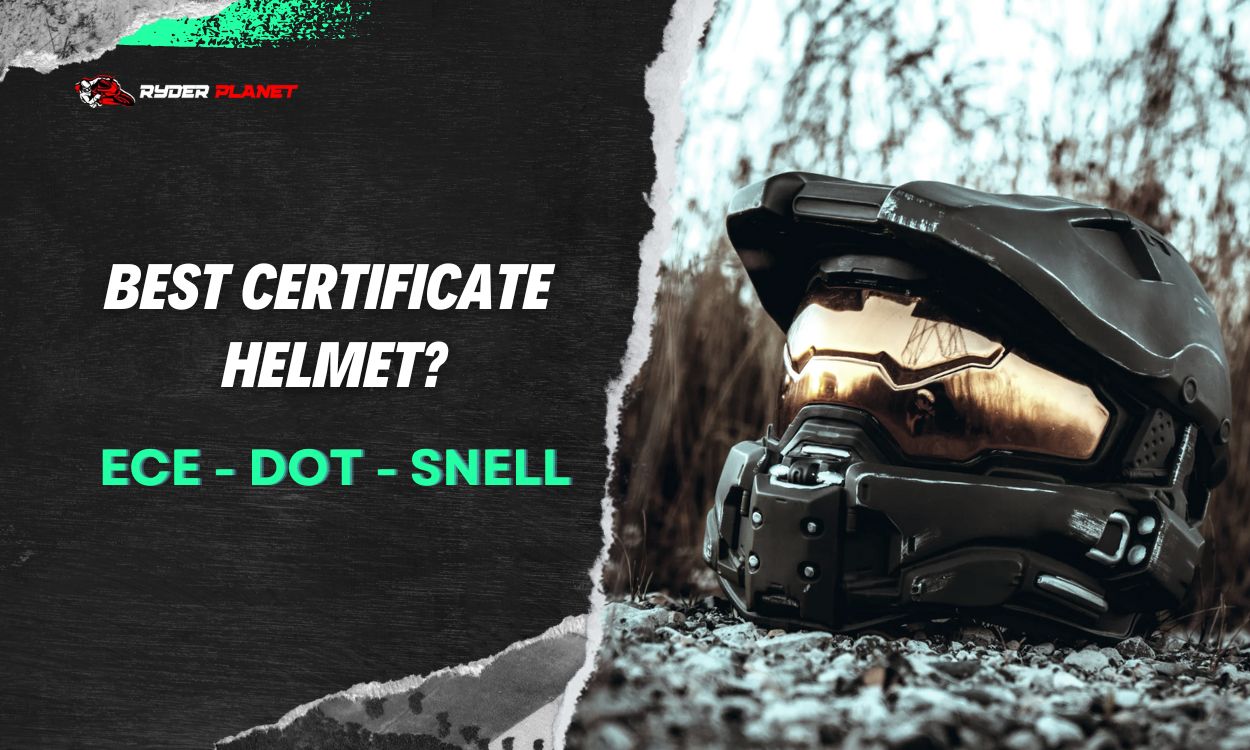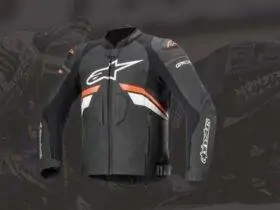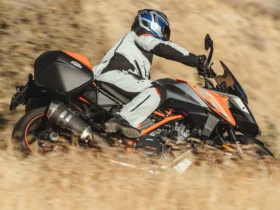When you buy a motorcycle helmet, there are so many factors that you should consider. But the one above everything else is the Motorcycle helmet safety ratings of the helmet. Some of the basic standards are DOT, Snell, and ECE certifications that every rider should recognize and understand.
Riders who know these certifications will be able to make a better choice as they buy their safety gear and thus feel safe while riding. In this article, we have an in-depth look at the three major motorcycle helmet safety regulations, compare the testing methodologies they use, and help the reader evaluate which of the standards will be best for them.

Understanding Motorcycle Helmet Safety Ratings
DOT Helmet Standards
In the U.S., the Department of Transportation (DOT) is the one that ensures compliance with Federal Motor Vehicle Safety Standard (FMVSS) No. 218 concerning motorcycle helmets. There must be a DOT label on every helmet sold in the United States. It is the label that ensures compliance with safety and performance standards.
Testing Components of FMVSS 218:
- Impact Attenuation Test: This test measures the helmet’s capacity to absorb the energy generated during certain impacts via dropping the helmet from a pre-specified height on various anvil shapes. The maximum permissible acceleration peaks in this procedure must stay below the 400g mark because exceeding this value will disqualify the helmet as safe.
- Penetration Test: A pointed strike is dropped onto the helmet from a defined height to ensure the striker does not penetrate the helmet to the test head from the inside.
Additional Tests:
- Peripheral Vision: Helmets should not go below a minimum peripheral view of 105 degrees.
- Projections: The helmet surface should have rigid projections
- Labeling: Helmets must be labeled with crucial information that contains the DOT symbol.
Based on the self-evaluation of the manufacturers, the DOT does random checks to ensure that they comply with the rules set by NHTSA. DOT standards while effective have been subjected to criticism for exposing the peak impact energy levels to higher values than other standards.
SNELL Helmet Ratings
The SNELL Memorial Foundation has been given the status of an independent authority by the US Department of Transportation. It voluntarily sets standards mainly in the field of helmet safety. The Foundation is known for its strict testing rules which are usually more stringent than those imposed by the U.S. Department of Transportation.
Features of SNELL Standards:
- Two Different Standards: M2020D and M2020R cover different demands, with M2020D sticking to M2015 requirements and M2020R going more in line with European standards like ECE 22.05.
- Rigorous Testing Protocols: Safety helmets have to succeed with an impact test which involves 3 different types of anvil surfaces (flat, hemispherical, and edge), and at some set velocity.
Key Testing Components of SNELL:
- Impact Test: An impact on a different surface multiple times is used to check how much energy is absorbed.
- Retention Strap Performance: Heavier weights were used than DOT when testing.
- Penetration Test: This test measures the resistance of the shell to sharp objects penetrating it.
SNELL certification is voluntarily given, with the manufacturers often bringing the helmets to the lab to prove that they have adhered to high safety standards. The SNELL regulations are known for their strictness and, thus are used more frequently for sports like racing and high-speed applications.
ECE Helmet Certification
The ECE 22.06 standard has significantly changed from the previously used ECE 22.05 standards. It now complies with the latest developments in safety technologies and testing methodologies.
Features of ECE 22.06
- Comprehensive Design and Testing Protocol: ECE has set strict standards for testing. This incorporates various design features that facilitate the safe and easy use of the color-coded opening tabs and ensure that the buckle functions properly
- Helmet Liner and Noise Regulations: Helmets must have liners that are sweat and cosmetics-resistant and will not be a cause of skin irritation. Moreover, the helmets must not be the reason that the wearer’s hearing is affected to a large degree.
Key Testing Components of ECE 22.06
- Rotational Impact Test: This represents the test to check whether the helmet can withstand the rotational forces.
- Multiple Impact Speeds: Accidents come in different forms and the various speeds tested during the experiment are meant to replicate those.
- Increased Number of Impact Points: The previous version had 6 but now it has 18, requiring more complicated helmet shells.
- Chin Bar and Visor Testing: The chin bar and visors are also tested for high impacts.
ECE 22.06 has made a real breakthrough in helmet safety for motorcyclists that comes with extensive tests and strict design rules, thus offering maximum safety for riders.
Comparisons and Real-World Impact
Comparing Motorcycle Helmet Safety Ratings
Each certification has its unique aspects. So making direct comparisons is essential for informed decisions:
DOT vs. SNELL
DOT standards require minimum safety compliance through a self-certification model, which has received some criticism for possibly permitting the use of non-compliant helmets. On the other hand, SNELL regulations are stricter and wider, with voluntary tests that are beyond DOT requirements. SNELL-certified helmets should be preferred for high-speed environments.
DOT vs. ECE
While DOT focuses on the self-certification process of compliance, ECE 22.06 incorporates the pre-market testing of each helmet and covers the whole testing protocol, which leads to a higher level of safety and performance. ECE also includes design features that are directed at safety and practical use like noise regulations and buckles that are easy to use.
SNELL vs. ECE
The standards of the SNELL and the ECE are both precise ones and they always require testing, but these standards are different in some aspects. Recommended by SNELL, voluntary certification includes additional tests such as face-shield penetration and fit tests. Whereas ECE 22.06 emphasizes the broader testing including the rotational impacts and more impact points.
Which Certification is Best?
Choosing the Best Motorcycle Helmet Safety Rating
The best helmet certification can vary based on the rider’s needs:
- For Maximum Protection: The SNELL standard has been certified as the best offering of safety of all available options, especially in high-speed and racing situations.
- For Comprehensive Testing and Practical Features: ECE 22.06 helmets have provided high-level safety in addition to other practical features that are perfect for everyday riders who need maximum protection.
- For Basic Safety Compliance: The helmets obtained from the DOT certification reflect at least the minimum safety standards that are mandatory for general riding within the U.S.
Summing it up
Knowledge of the difference between DOT, SNELL, and ECE helmet certifications is necessary for making a good choice of safety gear. The level of security, the stringency of testing, and the practicality of features are different for each certification. Helmets that meet the highest level of standards are the only ones that can help riders cut down on serious injuries and deaths in motorcycle accidents by a large degree.
FAQ – Motorcycle Helmet Safety Ratings
A DOT (Department of Transportation) approved helmet complies with the U.S. government’s minimum safety standards. These specifications are designed to ensure that the helmet can withstand the vast majority of accidents and prevent your head from sustaining injuries.
DOT is a mandatory regulation that covers only basic requirements, while Snell is a voluntary standard that emphasizes impact and penetration tests. The helmet with Snell certification is usually thought to be safer, particularly for high-speed riding or racing.
ECE-certified helmets pass through a variety of rigorous tests to check the resistance, retention, and even exposure to solvents and UV light, which are impact tests. ECE 22.06 is a recent development and is one of the best and most inclusive global standards available.
Yes, a helmet can be certified for various certifications and standards and it is therefore important to understand the value of some of these certifications in the long run.
It is all about your specific requirements. DOT-certified helmets are good for basic protection in the U.S. Snell-certified helmets are ideal for high-speed or racing conditions due to their rigorous testing. ECE-certified helmets are globally cherished for their thorough safety examinations. Go for a comfortable helmet, and check if it is certified by relevant safety standards for your riding style and location.








Leave a Review